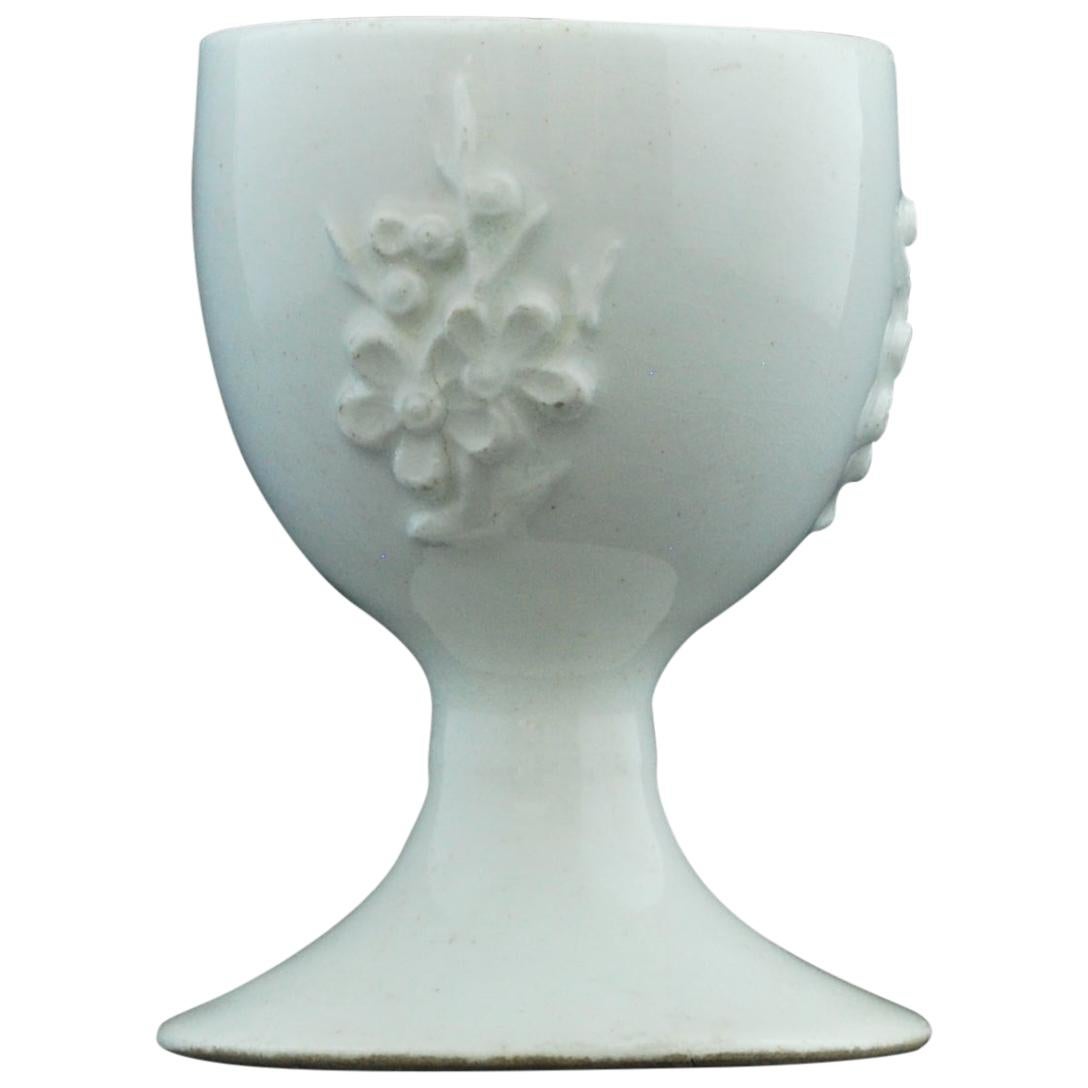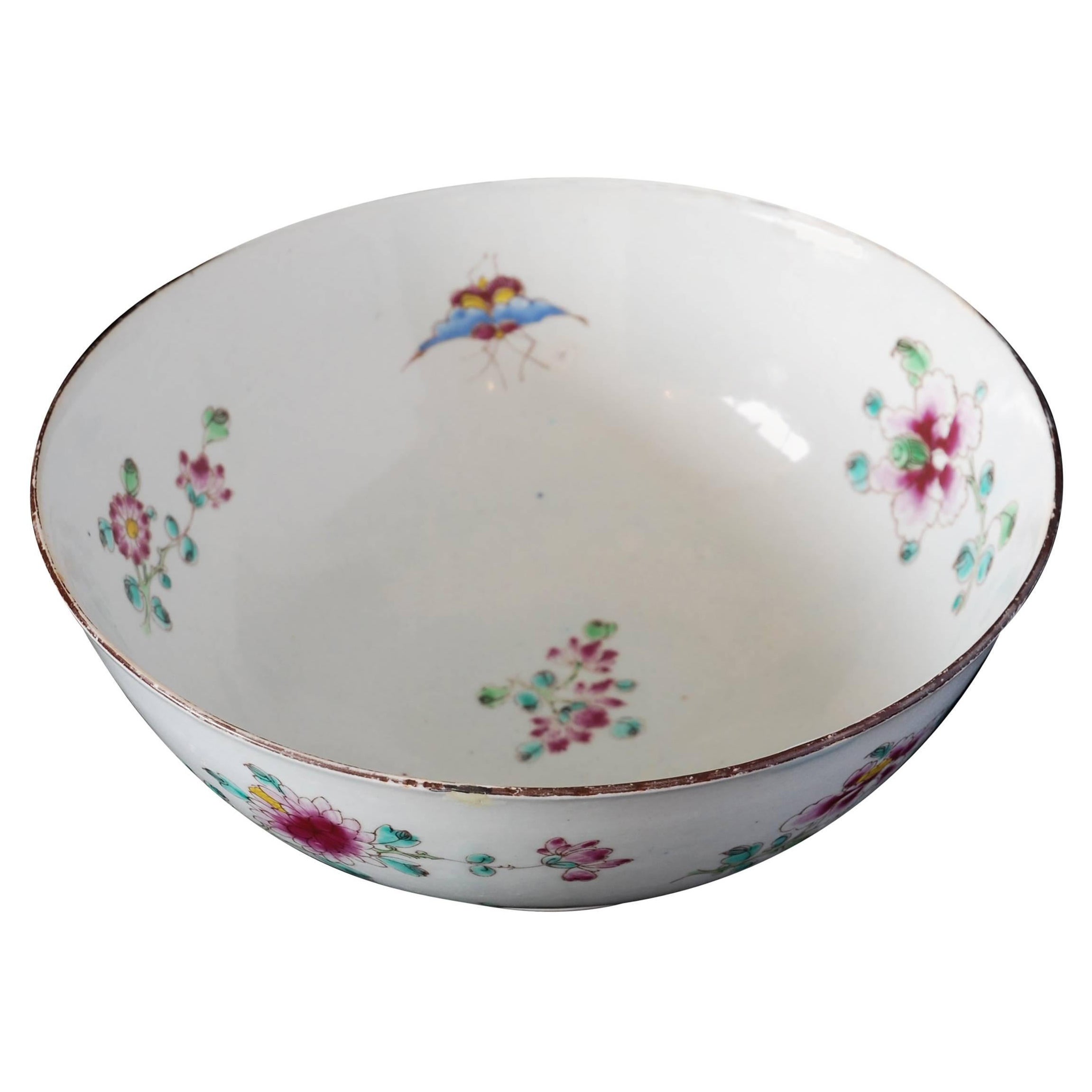Items Similar to Chestnut Basket, Two Quail Pattern, Bow Porcelain Factory, circa 1758
Want more images or videos?
Request additional images or videos from the seller
1 of 5
Chestnut Basket, Two Quail Pattern, Bow Porcelain Factory, circa 1758
About the Item
A ‘spectacle basket’, probably for oranges, with Kakiemon decoration to the interior, featuring the Two Quail pattern.
Provenance: Taylor Collection
- Creator:Bow Porcelain (Maker)
- Dimensions:Height: 3.5 in (8.89 cm)Diameter: 7 in (17.78 cm)
- Style:Chinoiserie (Of the Period)
- Materials and Techniques:
- Place of Origin:
- Period:
- Date of Manufacture:circa 1755
- Condition:Small chip above the handle; typical glaze pull-back to footrim.
- Seller Location:Melbourne, AU
- Reference Number:
About the Seller
5.0
Gold Seller
These expertly vetted sellers are highly rated and consistently exceed customer expectations.
Established in 2005
1stDibs seller since 2017
69 sales on 1stDibs
Typical response time: 3 hours
- ShippingRetrieving quote...Ships From: Melbourne, Australia
- Return PolicyA return for this item may be initiated within 14 days of delivery.
More From This SellerView All
- Tankard with Printed Decoration, Bow Porcelain Factory, circa 1758By Bow PorcelainLocated in Melbourne, VictoriaPint mug, in baluster form, decorated with early transfer prints of pheasants and two sheep. Transfer printing on bow porcelain is very rare. Prov: Taylor Coll; Winifred Williams,...Category
Antique Mid-18th Century English Neoclassical Porcelain
MaterialsPorcelain
- Decorative Basket, Bow Porcelain Factory, circa 1760By Bow PorcelainLocated in Melbourne, VictoriaA pierced basket standing on a well-formed rococo base. Perhaps for potpourri, although the internal decoration suggests another use. We think probably oranges, chestnuts, etc. Pr...Category
Antique Mid-18th Century English Rococo Figurative Sculptures
MaterialsPorcelain
- Egg Cup, Bow Porcelain Factory, circa 1752By Bow PorcelainLocated in Melbourne, VictoriaModelled after a small Chinese blanc-de-Chine wine cup of Dehua, Fujian Province; the bowl with three single prunus sprigs. Thick glaze with some crazing around base. Green translucency. Base glazed but partially wiped. Provenance: Taylor Collection; Parkside Antiques Melbourne...Category
Antique Mid-18th Century English Chinoiserie Porcelain
MaterialsPorcelain
- Punch Powl, Bow Porcelain Factory, circa 1755By Bow PorcelainLocated in Melbourne, VictoriaA rather splendid punch bowl from the Bow Porcelain Factory, enameled with flowers and insects in the Famille Rose style. A good size, at almost nine inches in diameter. Famille R...Category
Antique Mid-18th Century English Chinoiserie Porcelain
MaterialsPorcelain
- Dessert Plate, Bow Porcelain Factory, circa 1760By Bow PorcelainLocated in Melbourne, VictoriaCircular plate, the well outlined and transfer printed in black/brown outline and filled-in with 'wet' enamels all with Chinese figures in a garden and a child playing with an excite...Category
Antique Mid-18th Century English Chinoiserie Porcelain
MaterialsPorcelain
- Dessert Plate, Bow Porcelain Factory, circa 1756By Bow PorcelainLocated in Melbourne, VictoriaPlate, circa 1755-1760: Octagonal plate, the decoration after an oriental original (possibly from the region now modern Bhutan), with four robed ladies walking through a stylized lan...Category
Antique Mid-18th Century English Chinoiserie Porcelain
MaterialsPorcelain
You May Also Like
- Bow Pair of Porcelain Figures, Arlecchino and Columbina, Rococo ca 1758By Bow PorcelainLocated in London, GBThis is a wonderful pair of figures of Arlecchino and Columbina, made by the Bow Porcelain factory in about 1758. These figures formed part of a series of the Commedia dell'Arte, a very popular series of theatrical figures that served as decoration at the dinner table in the 18th Century. The Bow Porcelain Factory was one of the first potteries in Britain to make soft paste porcelain, and most probably the very first to use bone ash, which later got perfected by Josiah Spode to what is now the universally used "bone china". Bow was the main competitor of the Chelsea Porcelain Factory, but where Chelsea made very fine slipcast porcelain, Bow made a different soft paste porcelain that tended to be softer and could be pressed into moulds. Bow served a larger public generally at lower prices. The factory was only in operation between 1743 and 1774, after which the tradition got incorporated into some of the later famous potteries such as Worcester and Derby. These figures were used to adorn the dinner table when dessert was served; groups of figures served to express something about the host, the guests, or to direct the conversation. The Italian Commedia Dell'Arte, a comical form of masked theatre, was very popular in those days and Bow copied many figures of the German Meissen series that were brought out in the decades before. This pair dates from about 1758, which was at the height of Bow's ability to make beautiful figurines often copied from Chelsea or Meissen. The pair is modelled after a Meissen pair by Kaendler. The porcelain is translucent with a beautiful milky glaze - Bow was probably the first pottery using bone in its porcelain recipe. Arlecchino (Harlequin) is playing the bagpipes, dressed in an odd costume of mismatched chintz and playing cards and wearing a funny black trumpet...Category
Antique 1750s English Rococo Figurative Sculptures
MaterialsPorcelain
- Bow Porcelain Ocagonal Fan-Panelled Landscape Pattern Dish c1760By Bow PorcelainLocated in Tunbridge Wells, GBHeading : Bow porcelain octagnoal, fan panelled, underglaze powder blue, landscape pattern dish Date : c1760 Period : George III Marks :Faux Chinese marks Origin : New Canton - then...Category
Antique 1760s British George III Porcelain
MaterialsPorcelain
- First Period Worcester Pair of Porcelain Basket Leaf Dishes, circa 1758-1760By 1st Period Worcester Dr. WallLocated in Downingtown, PAFirst Period Worcester pair of porcelain basket weave leaf dishes, circa 1758-1760. The first period Worcester porcelain dishes with mou...Category
Antique Mid-18th Century English Georgian Porcelain
MaterialsPorcelain
- Bow Porcelain Orphaned Coffee Cup, Famille Rose Peony, circa 1755By Bow PorcelainLocated in London, GBThis is a very charming orphaned coffee cup made by the Bow Porcelain factory in about 1755. The cup is decorated in a Chinese "famille rose" peony pattern. This cup would have been part of a large tea service, and the tiny size shows how expensive coffee was in the 18th Century. The Bow Porcelain Factory was one of the first potteries in Britain to make soft paste porcelain, and most probably the very first to use bone ash, which later got perfected by Josiah Spode to what is now the universally used "bone china". Bow was the main competitor of the Chelsea Porcelain Factory, but where Chelsea made very fine slipcast porcelain, Bow made a different soft paste porcelain that tended to be softer and could be pressed into moulds. Bow served a larger public generally at lower prices. The factory was only in operation between 1743 and 1774, after which the tradition got incorporated into some of the later famous potteries such as Worcester and Derby. The cup is unmarked, which is normal for Bow items of this era. Condition report the cup is in excellent condition without any damage or repairs. There are various glazing imperfections, which are quite normal for porcelain of this era. Antique British porcelain...Category
Antique 1750s English Rococo Tea Sets
MaterialsPorcelain
- Bow Complete Set of Porcelain Figures "The Four Elements", Rococo, circa 1765By Bow PorcelainLocated in London, GBThis is a very rare and impressive complete set of large figures called The Four Elements, made by the Bow Porcelain factory in about 1765. It consists of Ceres representing Earth, V...Category
Antique 1760s English Rococo Figurative Sculptures
MaterialsPorcelain
- Circa 1830-60 Blue Canton Chestnut BasketLocated in Chapel Hill, NCCirca 1830-60 Blue Canton reticulated chestnut basket, Chinese export. Fine condition, one bottom glaze flaw. Qing dynasty. Pure Western form. 10 7/8" x 9 3/4" x 4" h. Whitehall Ant...Category
Antique Early 19th Century Chinese Chinese Export Porcelain
MaterialsPorcelain
Recently Viewed
View AllMore Ways To Browse
18th Century Bow Porcelain
Antique Spectacle
Kakiemon Porcelain
Bow Pattern Porcelain
Quail Ceramics
Silver Quail
Two Quail
Antique Chestnut Baskets
Bow Kakiemon
Peacock Plate
Imari Pattern China
Chinese Decor Ceramics
Spode English China
Gold Dish Sets
Dishes Made In China
Breakfast Plate
China Dinnerware
Silver Rim Set Of China Plates





